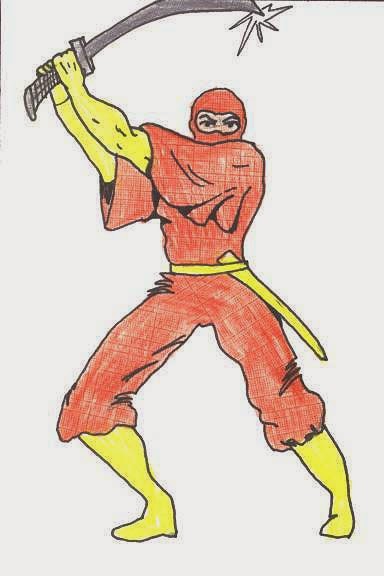Day
of the Ninja is a US holiday, started
as a counterpoint to "Talk like a Pirate Day" by Ninja
Burger. It contributes to the never ending fight of which is better - the ninja or the pirate. The functions of the ninja included
espionage, sabotage, infiltration, and assassination, and open combat
in certain situations. The date of this celebration was chosen in
honour of the release of the Tom Cruise film, The
Last Samurai today in 2003. People
are urged to dress like a ninja and do other related ninja
activities. So here are 10 Ninja facts to help you, but bear in mind
that a lot of things Ninjas did are illegal!
- In Japan, ninjas are not called ninjas, but shinobi. There is also a word for a female ninja - Kunoichi.
- There were ninja families, thought to have evolved from samurai families who chose to specialise in covert warfare. A ninja would start training as a child. Families organised themselves into guilds, which had their own territories and ranking systems: A jōnin ("upper man") was the highest rank, representing the group and hiring out mercenaries. This is followed by the chūnin ("middle man"), assistants to the jōnin. At the bottom was the genin ("lower man"), field agents drawn from the lower class and assigned to carry out actual missions.
- Ninja training was called Ninjutsu and would encompass martial arts, survival, scouting, physical training, stealth movement, swimming, spiritual refinement, pyrotechnics, disguise, horsemanship, meteorology, geography, and basic knowledge of various professions to help with disguises.
- Dressing like a ninja actually doesn't take much effort at all. There is actually no evidence that they dressed in black or wore masks. This idea probably came from art, when they would be portrayed in black to give the impression of invisibility. They were far more likely to be disguised as civilians, so whatever you're wearing, you're dressed like a ninja! Common disguises also included priests, entertainers, fortune tellers, merchants, rōnin, and monks.
- A ninja did not necessarily work alone, either. They often worked in teams to help one another scale walls, and would use passwords to communicate.
- The ninja's weapon of choice was a katana, or samurai sword, which had a number of uses besides the obvious. Probing dark places, placing against a wall to use as a foothold, or turning it into a stunning device by putting pepper, iron filings and dirt into the scabbard so that as the sword was drawn the concoction would fly into the enemy's eyes and stun or blind them. They would also use shorter swords, daggers, rocket-propelled arrows and throwing stars.
- According to legends, ninjas were believed to have super-powers - including flight, invisibility, shape-shifting, the ability to "split" into multiple bodies, the summoning of animals, and control over the five classical elements. Not much different from the types of things super-villains can do in comic books today.
- They are also thought to have used Tao mystic methods known as kuji, basically incantations and hand movements, which were initially used for healing and exorcism before being adopted by martial artists. The effects might be to increase the ninja's own physical or mental capabilities, or magically immobilising an enemy.
- Ninjas are said to have used Kites to fly over enemy territory in order to gain access, or to drop bombs.
- Japanese castles were often "ninja-proofed" - the way to the inner compound would be a winding route with blind spots and holes in walls where guards could hide; there would be floors designed to creak when walked over; outdoor areas were covered in gravel which is difficult to move stealthily over, and buildings would be segregated so that fires (arson being a favourite ninja method) could be easily contained.

No comments:
Post a Comment